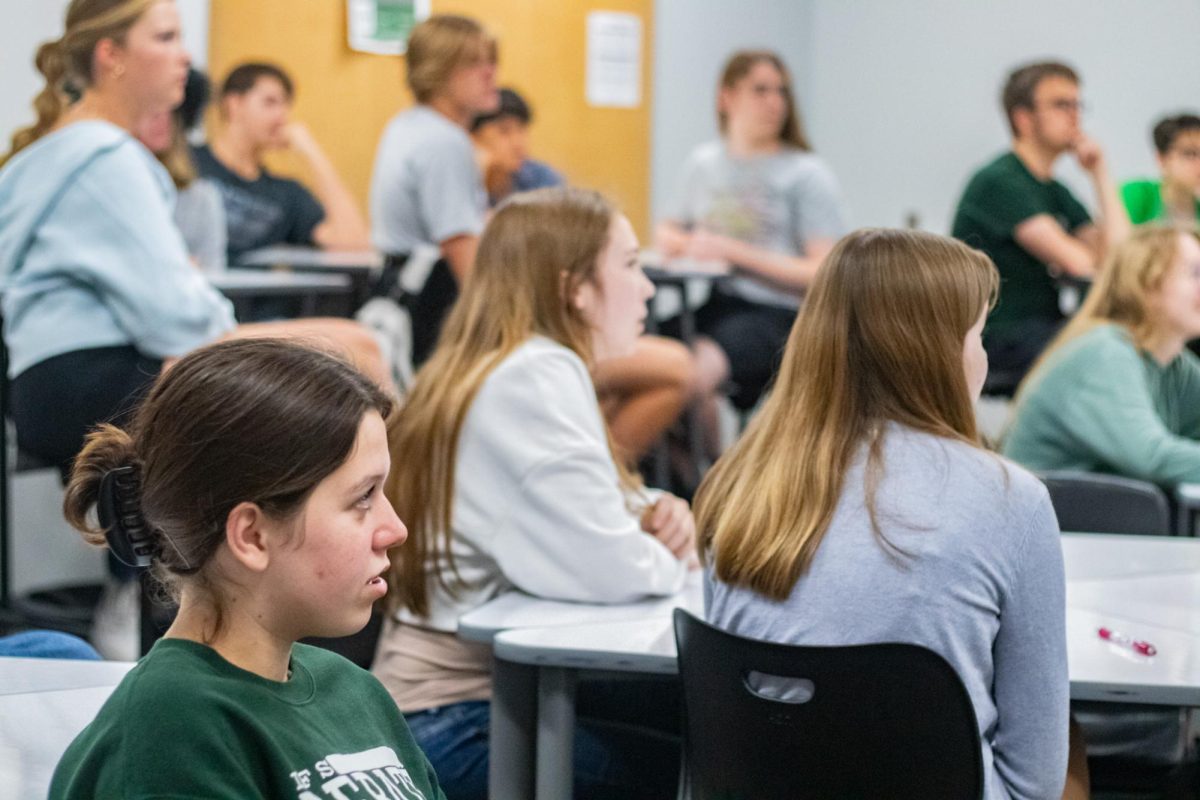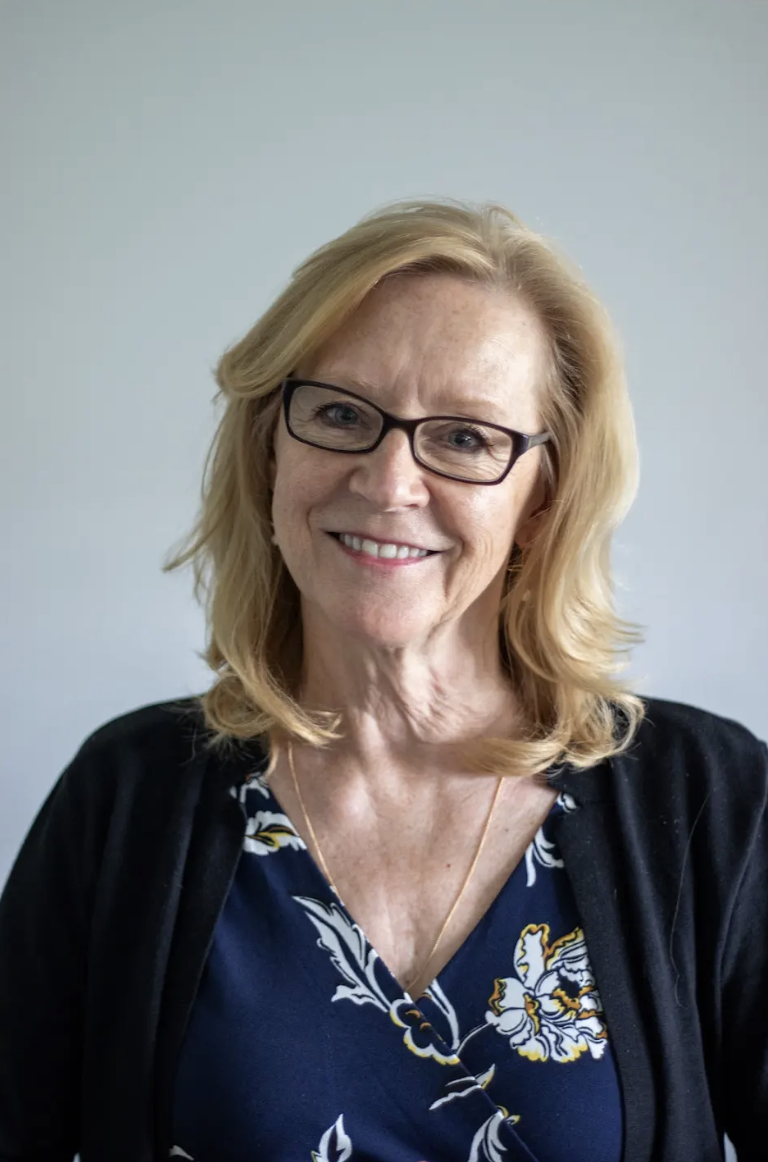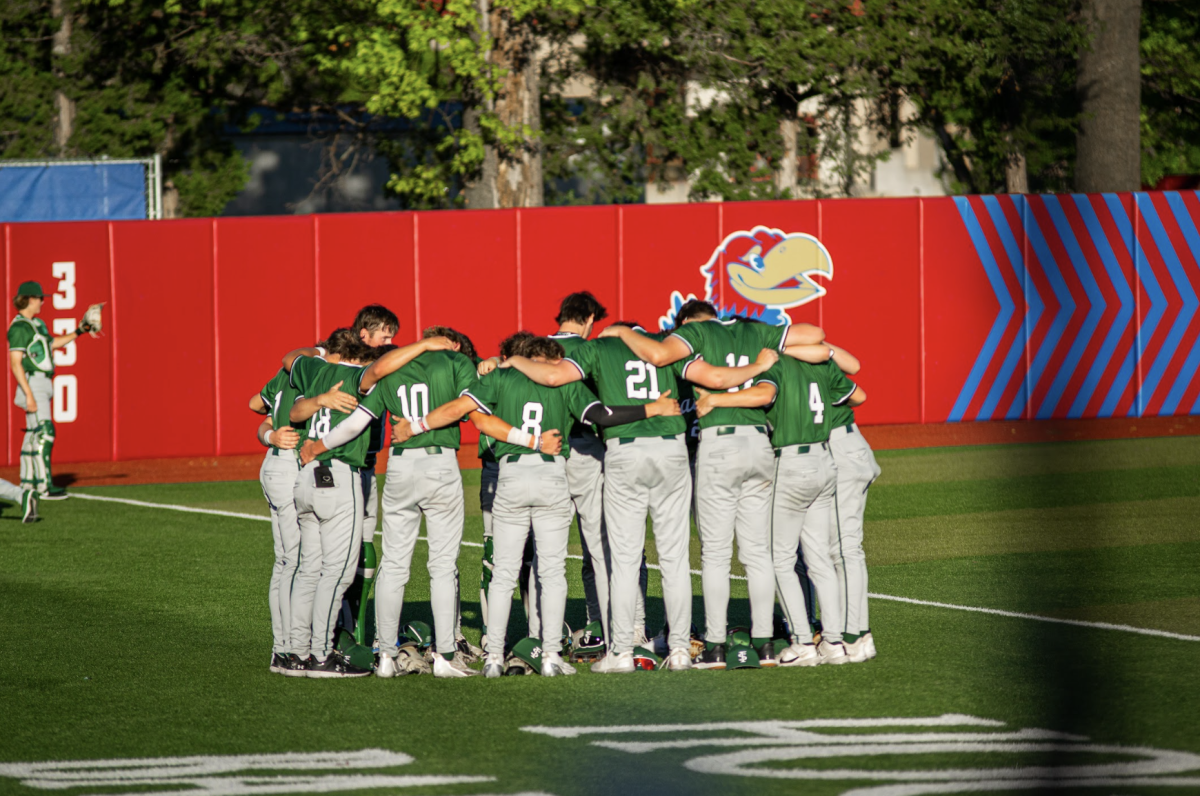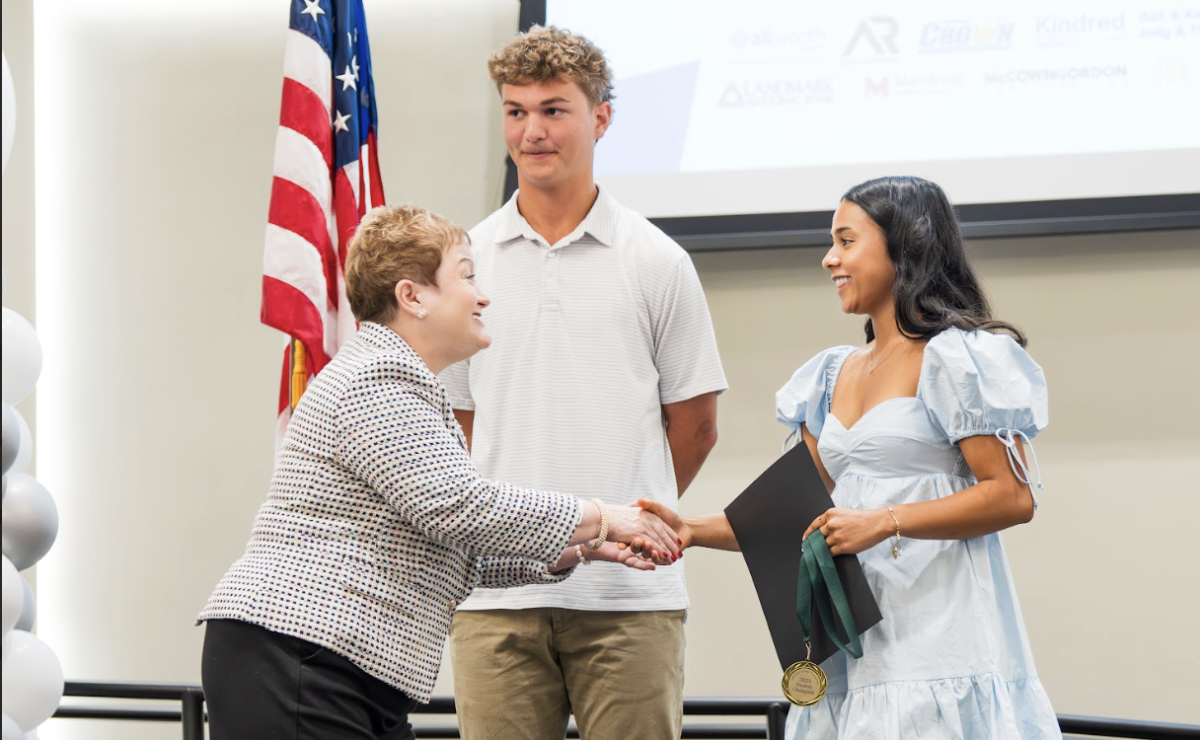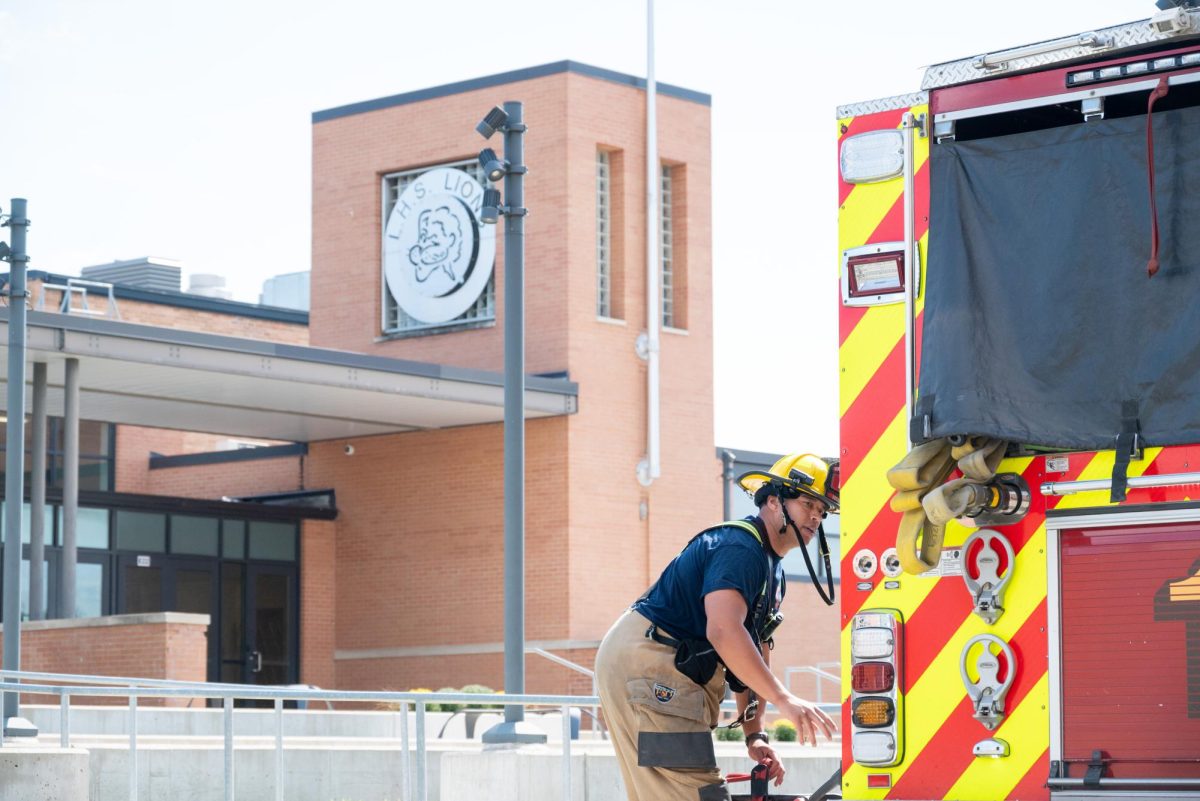After the first few weeks back, staff is left to frantically figure out how to handle the increase in classroom sizes. The Board of Education’s budget cuts decreased teachers’ positions, creating a domino effect on student and teacher interactions. Added with increased enrollment, this year’s classroom sizes are left bigger than ever.
With the administration’s rush to organize schedules, teachers and students must adapt to new class environments. This could mean anything from teachers rearranging desks to completely changing their teaching techniques. English teacher Kylee Johnston feels that increasing classroom sizes greatly impacts students’ emotional connection with their teachers.
“Class size affects students’ and teachers’ ability to connect, which we know is one of the vital factors for helping a student succeed in class, but now it’s much harder to do that,” Johnston said.
Not only are teachers modifying their syllabus to fit a bigger classroom, but they are now also found putting in more time outside of school to grade. Johnston notices that more work gives her less personal time to enjoy with her family.
“I signed up to be an English teacher, and I knew it would involve some extra time outside of work, but this is more than I’ve ever had,” Johnston said.
After many teachers have expressed their workload struggles, the administration is working on ensuring the wellbeing of their teachers and students. The admin team puts on monthly staff lunch-ins or team building activities to reinforce connections.
“One thing that we really tried to do as an admin team is try to communicate as much as possible to teachers,” Principal Amy McAnarney said. “We can’t lower their class sizes, but there’s a lot of little things we can do to try to decrease their stress.”
Even with this support, teachers are continuing to look for ways to engage their students.
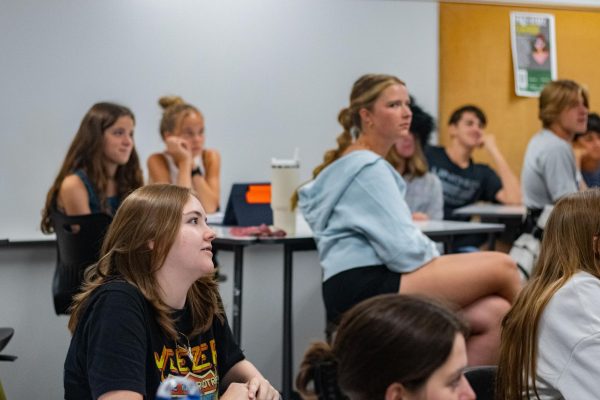
(Eli Roust)
For example, Arne Scholtz ends his day teaching 36 students AP European History, and he does not have the time to hear from each student in a 55 minute class. Colleagues in similar positions find this to be exhausting knowing that their wages are disproportionate to larger class sizes.
“Education is the future of our society, and we’re standing back saying ‘we don’t have money for that’,” Scholtz said. “[The Kansas Board of Education] needs to figure out how to get more money to pay teachers, because I don’t know where the next generation of teachers will come from.”
At the end of the day, students, teachers and staff feel more challenges arise as classroom sizes increase. After the past difficult years, teachers feel this is the wrong answer to advancing education.
“It’s not sustainable to be in this situation, so I hold out hope that in a couple of years we’ll be able to hire more teachers, and we’ll keep focusing on retaining our highly qualified teachers,” Johnston said.



